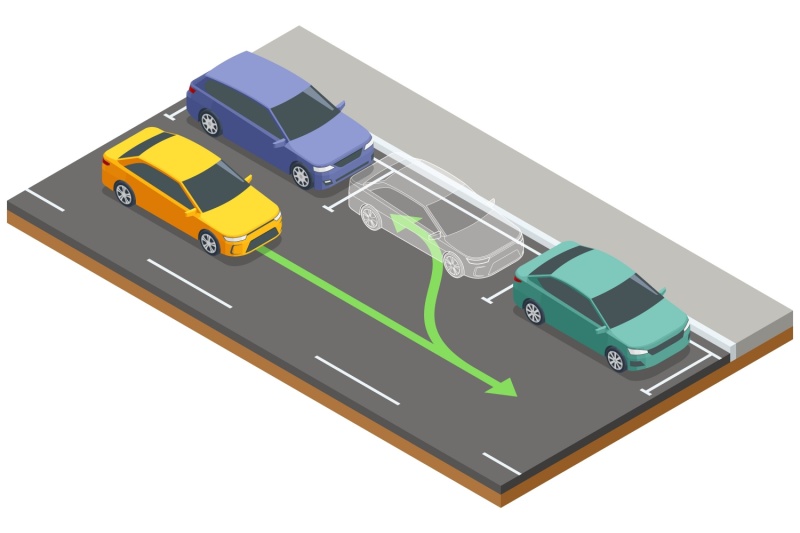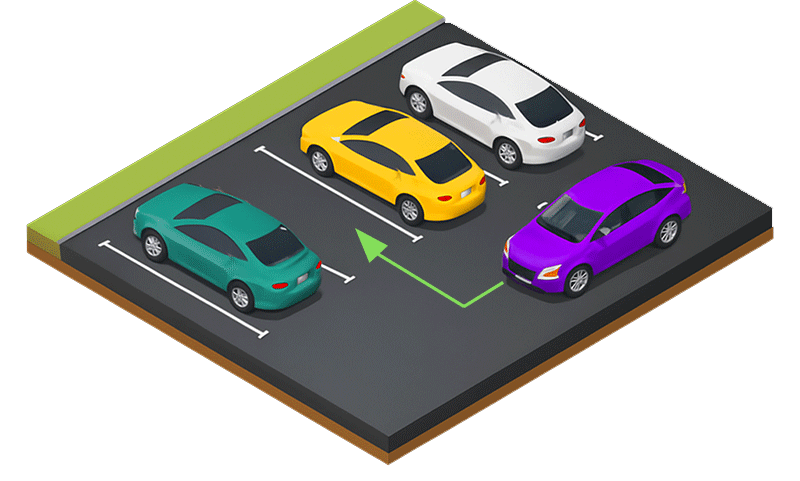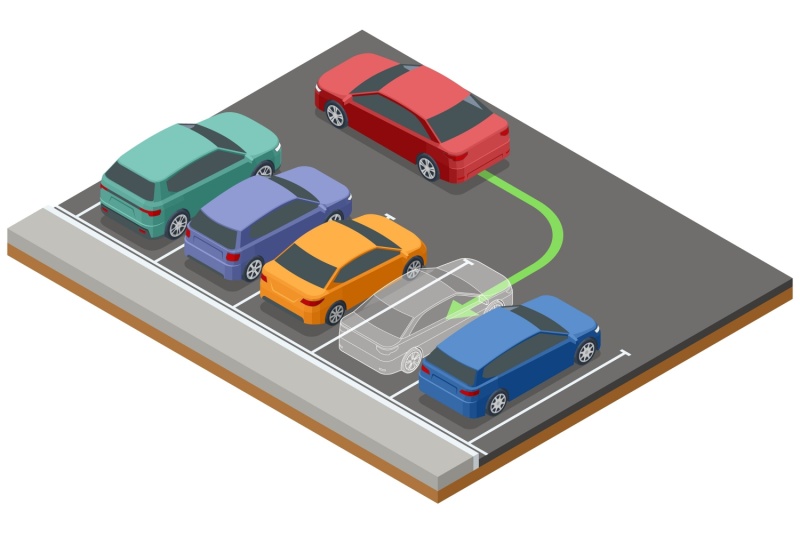How to park a car: a step-by-step guide
We understand that parking can be nerve-wracking. Whether you're a new driver or someone who's been behind the wheel for years, that moment when you need to squeeze into a tight space can make anyone's heart race.
The good news? With the right approach and a bit of practice, you can park confidently anywhere. This guide covers the legal requirements, essential techniques for parallel parking, forward bay parking, and reverse bay parking, plus practical tips to build your confidence. Here's everything you need to know.
Before you start: know the rules
Legal parking requirements you need to follow:
- During daylight hours, you can park facing either direction
- At night, always park facing the same direction as traffic flow
- Stay at least 10 metres away from any junction
Where you absolutely cannot park:
- Taxi ranks and bus stops
- Double yellow lines
- Red routes (except buses)
- Permit holder spaces (white P on blue background)
- Urban clearways (check the times on yellow and black signs)
- Areas with no stopping signs (red circles on blue background)
- Loading bays
- Yellow and white zigzag lines
For the complete list, check The Highway Code – it's your definitive guide.
Where you can park safely:
- In front of houses, as long as you're not blocking driveways
- Some cycle lanes outside restricted hours
- On single yellow lines during permitted times
- Any space at least 10 metres from junctions
Choosing your space
If you're still getting used to your car's size, that's completely normal. Pick spaces with plenty of room while you're learning.
The three essential parking methods

Parallel parking
Method 1: Parallel parking
This is the one that makes most people nervous, but it's actually quite straightforward once you know the technique. It's safer and easier to parallel park on the left side of the road. Follow these steps:
1: Find a space that's clearly big enough for your car
2: Signal your intention to stop – other drivers will appreciate the heads-up
3: Drive slowly and align the middle of your passenger window with the front of the car ahead of your target space
4: Check mirrors and blind spots thoroughly – look for traffic, pedestrians, and cyclists
5: When it's clear, look over your left shoulder and reverse slowly until your back wheels align with the car in front
6: Turn the steering wheel one full turn to the left while continuing to reverse slowly
7: Make sure you're clear of the front car and can see the kerb in your nearside mirror
8: When you see the kerb, turn the wheel one full turn to the right
9: Straighten up to align with the cars in front and behind, leaving space for everyone to get out
10: Apply the handbrake and put the car in neutral (or park for automatics)
 Forward bay parking
Forward bay parking
Method 2: Forward bay parking
This is what you'll do in most car parks. If you can choose, right-hand bays often give you more manoeuvring room. Follow these steps:
1: Check the bay is big enough – if you're unsure, it probably isn't worth the risk
2: New drivers often find it easier to pick bays with empty spaces on either side
3: Check mirrors and blind spots before you start
4: Indicate, then move forward slowly, lining up the parking line on your right with the bottom of your right wing mirror
5: Once you're sure it's clear, proceed slowly
6: Turn the wheel fully right (or left if parking on the left) and continue until you're straight in the bay
7: Stop when the bay's front line appears beneath your wing mirror
8: Adjust your position if needed to stay within the lines
9: Apply the handbrake and select neutral or park
Reverse bay parking
Method 3: Reverse bay parking
Many drivers find this easier than forward parking because you have better control when leaving. Left-hand bays are often simpler for this method. Follow these steps:
1: Follow the same initial checks as forward parking, then indicate left
2: Drive slowly past your target space (about two bay widths) and position yourself roughly one metre away from the bays
3: Select reverse and turn the wheel fully left, moving slowly back into the bay. Use all your mirrors and any parking sensors or cameras
4: Straighten the wheel when your rear bumper is halfway into the bay
5: Stop when the parking lines appear in your wing mirrors and you're centred between the white lines
Our top parking tips
- Find parking easily: Use Google Maps, parking apps, or platforms like YourParkingSpace to locate spaces near your destination before you travel.
- Make it easier on yourself: Choose end spaces or ones with empty bays alongside when you're learning. There's no prize for making parking harder than it needs to be.
- Don't be embarrassed to ask for help: Get out and check your positioning, or ask someone to guide you in. Most people are happy to help, and it's far better than risking damage to your car or someone else's.
- Take your time: Rush parking and you'll make mistakes. Turn off the music, take it slowly, and focus on getting it right. Remember, other drivers have been where you are – they can wait a few extra seconds.
- Practice makes perfect: If you're really struggling, find a quiet car park and practice with cones or markers. The more you do it, the more natural it becomes.
The bottom line
Parking anxiety is incredibly common – you're definitely not alone. The key is building your confidence gradually. Start with easier spaces, take your time, and don't be afraid to ask for help when you need it.
Remember, everyone was a beginner once. With practice and patience, you'll soon be parking like a pro.
At RIAS, we understand that driving confidence comes from knowledge and experience.
Our car insurance is designed to support you every step of the way on your driving journey.

